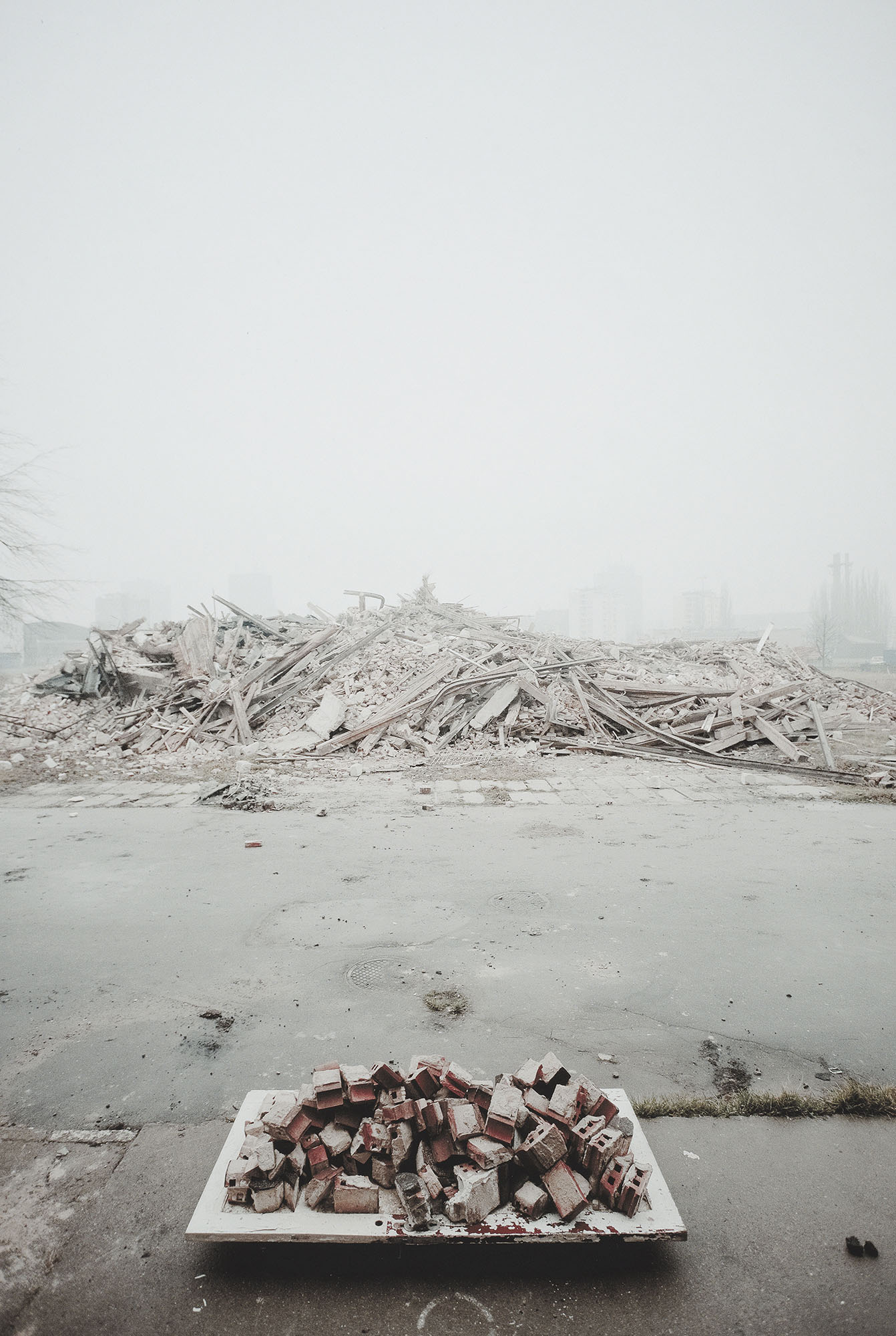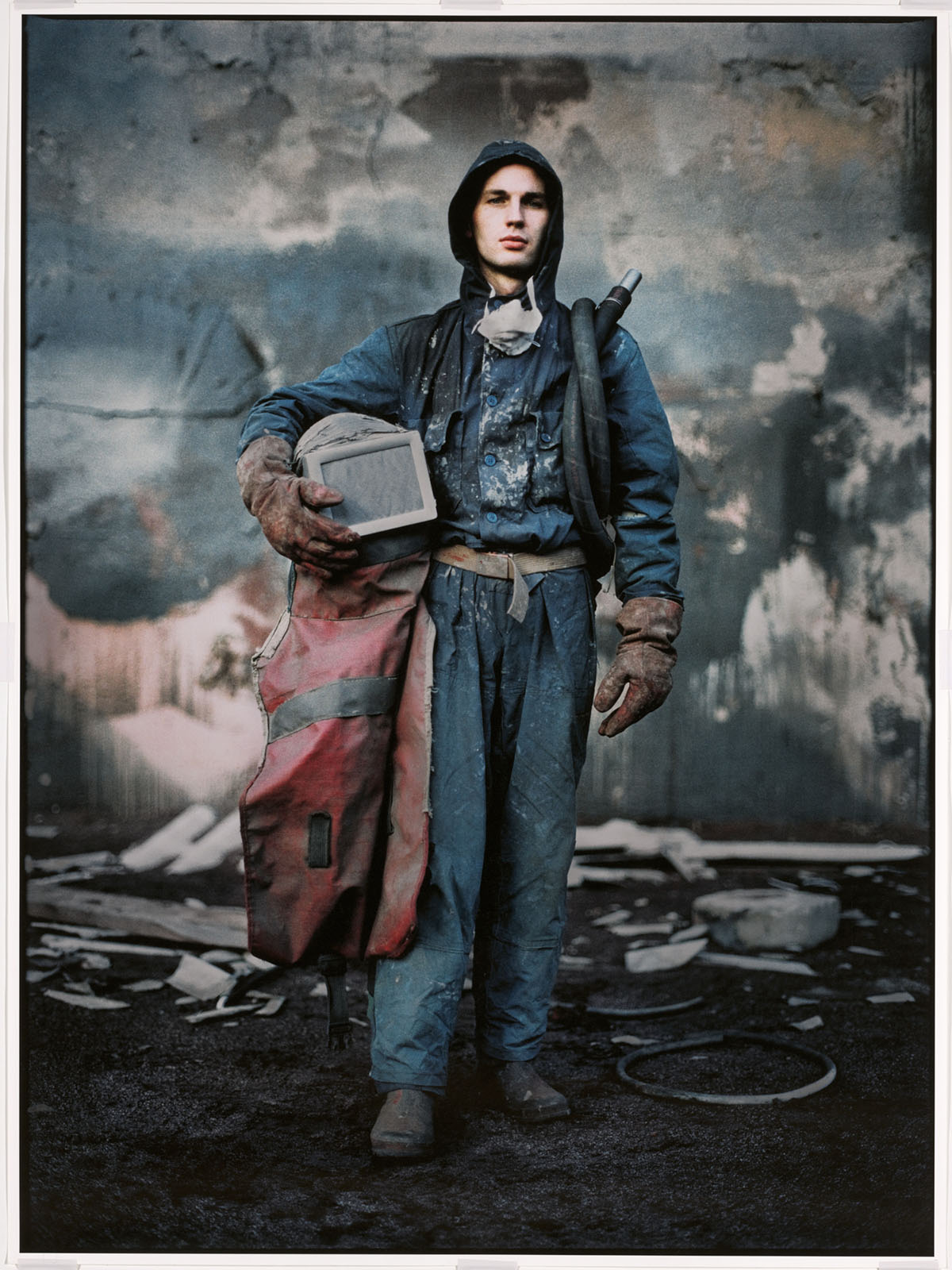The installation documents the transformations in the area of the former Gdańsk Shipyard, perceived as the place of birth, boom, and decline of the ‘Solidarity’ workers’ movement and an example of the thriving shipbuilding industry. For a number of years (1999-2013), Szlaga recorded the progressing destruction of the shipyard. He photographed the architectural transformations, the devastation of grand, and 19th-century brick buildings, such as the Director’s Villa with a library, as a symbol of the decline of the culture and intellectual thought that had been present since the establishment of the shipyard. The muted colours and expertly composed landscapes and portraits are a symbolic record of Poland’s transformation, the wasted human potential and painful processes of change that took place in the countries of Eastern and Central Europe.
Shipyard 1999–2013
The installation documents the transformations in the area of the former Gdańsk Shipyard, perceived as the place of birth, boom, and decline of the ‘Solidarity’ workers’ movement and an example of the thriving shipbuilding industry. For a number of years (1999-2013), Szlaga recorded the progressing destruction of the shipyard. He photographed the architectural transformations, the devastation of grand, and 19th-century brick buildings, such as the Director’s Villa with a library, as a symbol of the decline of the culture and intellectual thought that had been present since the establishment of the shipyard. The muted colours and expertly composed landscapes and portraits are a symbolic record of Poland’s transformation, the wasted human potential and painful processes of change that took place in the countries of Eastern and Central Europe.
- Object type:multi-object installation with video (pigment prints in five formats, slides, a book and a video)
- Year:1999–2013
- Dimensions:various dimensions
- inv. no.:MNG/NOMUS/11/D/1-140
- Własność:Deposit of the City of Gdańsk, part of the Gdańsk Collection of Contemporary Art
- Galeria:
Shipyard 1999–2013
- Object type:multi-object installation with video (pigment prints in five formats, slides, a book and a video)
- Year:1999–2013
- Dimensions:various dimensions
- inv. no.:MNG/NOMUS/11/D/1-140
- Własność:Deposit of the City of Gdańsk, part of the Gdańsk Collection of Contemporary Art
- Galeria:






